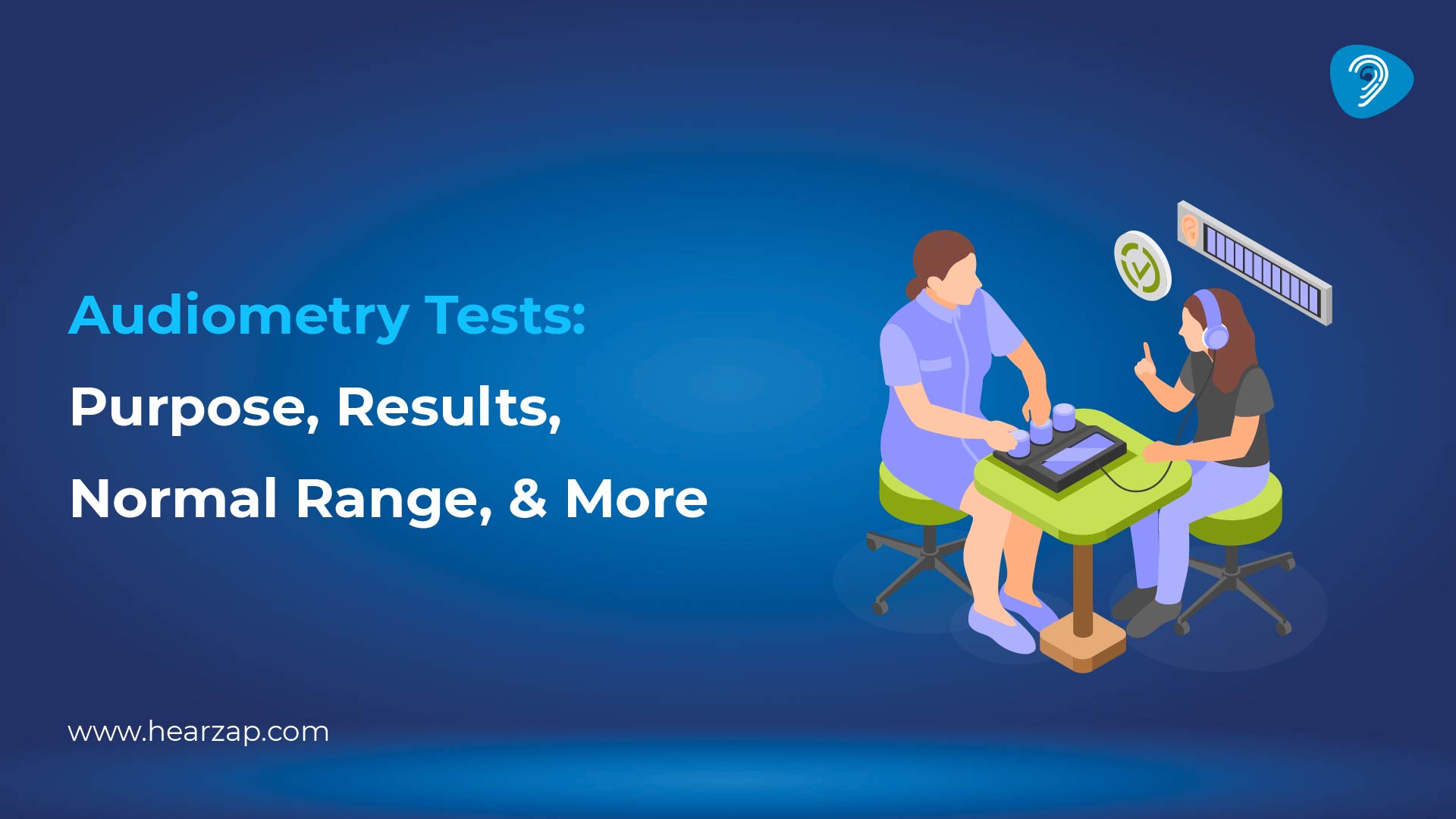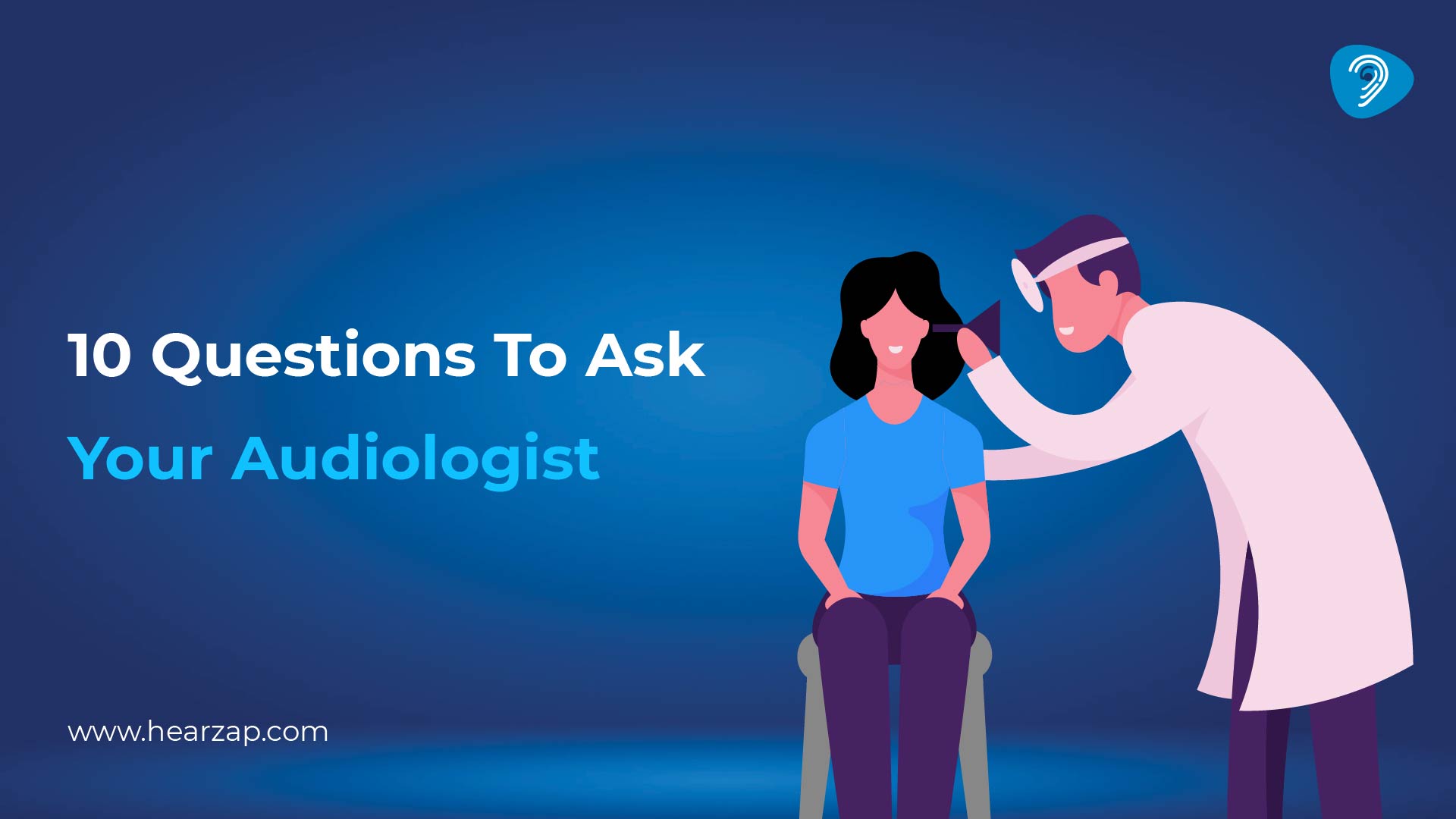HEARING CARE
Audiometry Test: Purpose, Results, Normal Range, and More
By Team Hearzap | June 2, 2025

Hearing loss can often go unnoticed until it begins to interfere with one's daily activities. This is where an audiometric assessment comes in a simple, non invasive procedure that assesses hearing functioning and screens for early manifestations of hearing impairment. It would help if you were aware of the audiometry test, its procedure, results, and implications, whether for regular check ups, job requirements, or because you've recently found it hard to follow conversations. Here, we will discuss everything one needs to know about audiometry: the normal range of audiometry, audiometry report interpretation, and testing procedures beforehand, during, and after.
What Is an Audiometry Test?
Audiometry is the process of clinical testing by which one's ability to perceive sound, in relation to pitch and frequency, is measured. An audiologist or ENT specialist usually carries out the test using an audiometer. It measures the quietest sounds one can pick at several frequencies while checking speech reception in noise. The test is painless and normally lasts for 20 40 minutes.
Test Results Interpretation
After the test, you’ll receive an audiometry test report showing your hearing thresholds in decibels (dB) across different frequencies (measured in Hertz or Hz). The report is shown in an audiogram..
How to Read the Audiometry Report:
- The X axis represents frequencies (from low to high pitches).
- The Y axis represents volume or loudness in decibels.
- The lower the line on the graph, the louder the sound needed for you to hear it, indicating potential hearing loss.
If you’re looking at your results and asking yourself, “Are these within the audiometry test normal range?”
Normal Range
The audiometry normal range refers to the softest sounds a healthy individual should be able to hear. These are the standard benchmarks used by audiologists to determine if your hearing is normal or impaired.
Audiometry Test Normal Range:
Hearing Level | Classification |
10 to 25 dB | Normal Hearing |
26 to 40 dB | Mild Hearing Loss |
41 to 55 dB | Moderate Loss |
56 to 70 dB | Moderately Severe |
71 to 90 dB | Severe Loss |
91+ dB | Profound Loss |
If your results fall outside of the 0–25 dB range, your audiologist may recommend further evaluation or treatment.
Uses of the Audiometry Test
Audiometry is applied to provide a vast variety of services ranging from diagnosing hearing impairments to assessing the effects of being exposed to noise for a prolonged period.
Some Common Uses for This Include:
- For Diagnosing Hearing Loss
- To assess inner ear conditions such as Meniere’s disease
- To monitor hearing for high-risk jobs (construction, factories, etc.)
- To assess for hearing aids or cochlear implants
- To assess hearing after treatment for ear infection or surgical treatment
How to Prepare for the Test
The test, in general, is straightforward and does not need any distinctive preparations. There are, however, some key considerations to ensure that the results are as accurate as possible.
Preparation Tips:
- Avoid exposure to loud noises for at least 12 to 24 hours preceding the test.
- Inform your audiologist if you have a cold, ear infection, or if you are taking medications.
- Please try to stay calm and relaxed; sometimes, anxiety might affect the results.
If you wear hearing aids, bring them, but expect to set them aside during the testing.
What Will Happen on Test Day
Testing occurs in a soundproof booth or quiet room. You will wear headphones and be told to respond whenever you hear a particular sound or tone, usually by pressing a button or raising a hand.
The Test Includes the Following Types of Audiometry:
- Pure tone audiometry- hearing tones of varying pitches and volumes.
- Speech audiometry- hearing words or sentences at different volumes.
- Bone conduction- placing a small device behind the ear to bypass the eardrum and test inner ear function.
This is a painless, uncomplicated procedure.
Factors Affecting Test Results
There are several such factors that can affect your test result, so make sure to discuss them with the specialist.
Influencing Factors:
- Recent noise exposure
- Earwax buildup
- Ear infections or colds
- Age related hearing changes
- Medications that affect hearing
If any of these apply to you, your audiologist might suggest retesting or performing further tests.
Conclusion
The audiometry test is one of the most reliable ways to check your hearing health. With a simple, painless procedure, you can get a clear picture of your auditory function, interpret your audiometry test report, and take the next steps toward better hearing. Whether you're curious about the audiometry test normal range, prepping for a job screening, or managing an ongoing hearing issue, this test is your first step to clarity, in more ways than one. Don’t wait until sounds become whispers. Take charge of your hearing health today with Hearzap.
Also Read: Tympanometry Test
Related Blogs

10 Questions to Ask Your Audiologist

5 Ways Healthy Hearing Can Improve Your Mental Health
Contact us
We are here for all your hearing needs, from hearing tests to hearing aids. Fill out the form below, and we will give you a call soon.
Please enter a valid mobile number with 10 digits.
Recent Blogs
By None | Dec. 4, 2025
By None | Dec. 2, 2025
By None | Nov. 28, 2025
By None | Nov. 27, 2025
By None | Nov. 26, 2025









